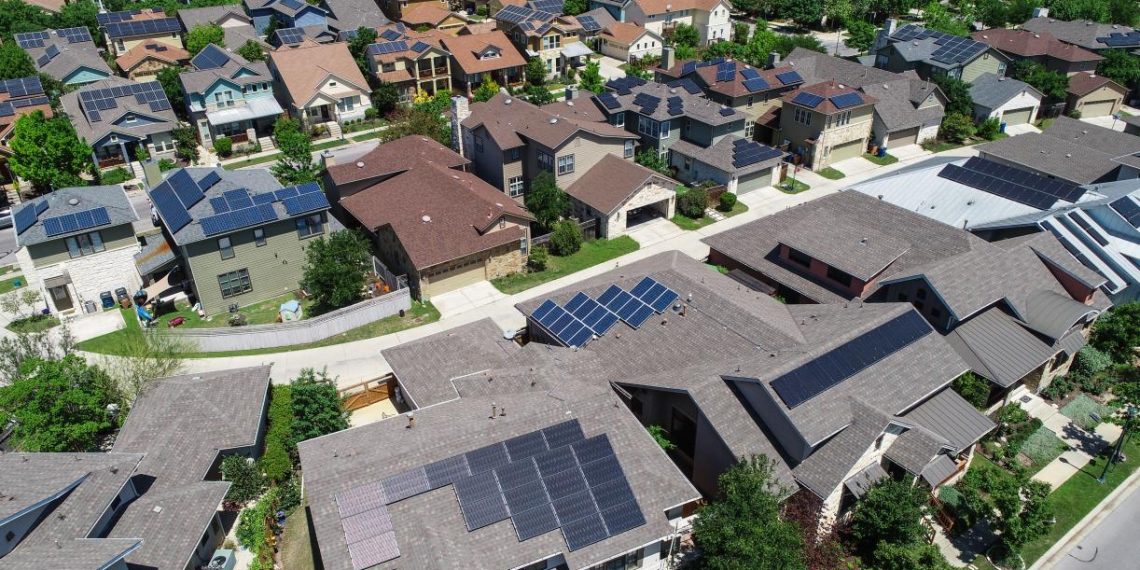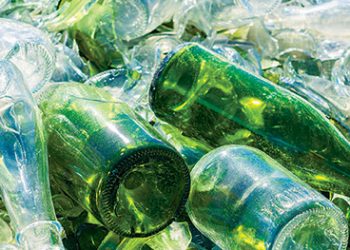When it comes to distributed energy resources, the future is here, with more solar arrays on rooftops, more electric vehicles on the streets, and more so-called controllable assets like water heaters inside buildings. The reason for the growing popularity of these resources, DERs for short, is no mystery: They can reduce utility bills for residents and businesses, help communities meet climate and equity goals and make the electric grid more resilient.
Two recent federal actions could support this potential surge and work in tandem to accelerate adoption of DERs. The Inflation Reduction Act is forecast to support rapid and sustained adoption of a variety of DERs, such as heat pumps and battery storage, through direct financial incentives and rebates. And the Federal Energy Regulatory Commission’s Order No. 2222 will allow bundles of DERs – like a group of residential solar arrays and EVs – to provide power and services to the grid in exchange for financial compensation, creating a new long-term value stream for the people and entities using these resources.
With lower initial costs and ongoing compensation opportunities, DERs are now even more attractive and attainable for local communities. Communities must leverage this new momentum to maximize DER deployment that advances both municipal and community-wide goals on climate change, equity and economic opportunity. Here’s how that could work.
How Can Distributed Energy Resources Benefit US Communities and the Grid?
DERs provide electricity generation, storage or other energy services and are typically connected to the lower-voltage distribution grid — the part of the system that distributes electric power for local use. Rooftop solar is perhaps the most well-known type of DER but there are many other types, including energy storage devices like batteries, smart thermostats, EVs and other appliances that can interact with the grid.
DERs can be installed by individual customers, businesses or municipalities and are often used to reduce energy bills — for example, when a customer uses electricity from a rooftop solar array instead of from the grid. Households or companies can also save money by using DERs off-peak (for example, charging an EV at night when energy costs less) or even by selling electricity back to the grid when prices are high. In addition to cost savings, certain DERs — primarily energy storage devices — can provide back-up power when the grid goes down.
When many DERs are installed in a community, the benefits can expand beyond individual bill savings and back-up power. If enough DERs reduce electricity use at times of high demand, they can eliminate or delay the need for expensive and polluting natural gas peaker plants (which run only when there is a high electricity demand) or additional electric grid infrastructure. And if DERs are storing or generating carbon-free energy, they can help communities curb air pollution and climate-warming emissions. DERs can even create new revenue streams for local governments if they are used to sell energy or grid services through wholesale energy markets.
3 Ways Local Governments Can Deploy More Distributed Energy Resources
An increasing number of local governments and residents already own and operate DERs, such as rooftop solar arrays, controllable water pumps and electric vehicles. Yet, local governments can take further action to reduce the overall costs of DERs and support their expanded adoption in both their own operations and throughout their communities. Here’s how:
1) Aggregation
FERC Order 2222 will soon allow DER aggregations in more markets to generate revenue by providing power, frequency regulation or other grid services. Revenues will depend on market prices and the volume of resources that are eligible to participate in various markets. Aggregating DERs requires implementation of controls and communications equipment to be able to participate in markets, which will cost money and reduce net revenue. Local governments can contract with third-party aggregators that will sell the resources into the wholesale market in return for a portion of the revenue.
Alternatively, if local governments have the expertise and staff capacity, they can participate in the wholesale market directly, but this required time and expertise also adds costs that affect net revenue. Local governments can also work with third-party aggregators to develop community-wide aggregations consisting of residentially owned DERs.
FERC Order No. 2222 applies to all DERs and directs regional grid operators (which include independent system operators, or ISOs, and regional transmission organizations, or RTOs) to allow these resources to supply all the services they are technically capable of providing through aggregation. The rule allows different types of DERs (such as distributed generation, storage and EV charging equipment) to combine in heterogeneous aggregations. It also sets a requirement that the minimum aggregation size be no greater than 100 kW. The motivation behind the rule is to reduce barriers to participation, such as transaction costs and minimum size eligibility requirements, for smaller but still valuable resources located on the distribution grid.
Each ISO/RTO has submitted compliance filings to FERC and will implement Order No. 2222 on different timelines over the next several years. Key regional issues addressed in these filings include, but are not limited to, the minimum and maximum size thresholds for aggregations and single resources; participation in multiple wholesale and retail programs; geographic requirements for aggregations; metering and telemetry requirements; and registration and utility review processes.
For more information about how local governments can benefit from the rule, check out WRI’s recent working paper, Benefits of Local Government Aggregation of Clean Energy Resources: Emerging Opportunities Under FERC Order Number 2222.
2) Demand Response Use
In addition to FERC Order 2222, local governments have energy assets that could be used as demand response resources, which can be bundled together and treated like a traditional generation resource in wholesale markets. For example, EVs in a municipal fleet — like electric garbage trucks or code enforcement vehicles — that may normally charge in the afternoon could generate revenue by charging during nighttime on high-demand days when afternoon electricity costs more, such as during heat waves. This fleet could also potentially participate in wholesale markets under FERC Order 2222 as an aggregated DER, but the owner would want to weigh differences, such as compensation and risks, between the two options before choosing.
Outside of wholesale power market regions, local governments may be able to participate in local programs offered by utilities or energy service providers. Retail net energy metering (NEM) programs, where available, could allow local governments and residents to sell excess energy to the grid to reduce their energy bills. However, DERs that do not generate energy, such as smart water heaters or water heaters, may still be able to participate in retail demand response programs.
3) Accelerating DER Adoption
In addition to the new tax incentives and rebates, the federal government has existing programs that help local governments deploy DERs, either on behalf of the municipality or the broader community. Local governments can use the Federal Funding Opportunities for Local Decarbonization (FFOLD) online tool to find and prioritize existing federal funding for clean energy projects.
In addition to federal funding, individual states may also offer financial and technical support to local governments interested in purchasing DERs. Local governments can contact their state agency that handles energy and environmental affairs or explore the Database of State Incentives for Renewables & Efficiency to learn more.
Local governments can also support residents who want to purchase DERs through programs like smart thermostat giveaways, property tax exemptions or production incentives for residential solar that can improve the economics of DERs. Local governments can also create educational campaigns to make residents aware of state and federal opportunities like rebates or tax incentives, or provide technical assistance to residents interested in purchasing and installing a DER.
What’s Next for Distributed Energy Resources in the US?
DERs offer local governments and communities ways to improve grid reliability and resiliency, reduce energy bills, meet climate and equity goals, and generate revenue. As the costs of DER technologies continue to fall, procurement is an increasingly sound financial decision.
However, for local governments with limited staff, expertise or financial resources, pursuing DER opportunities can seem daunting. First steps can include learning about potential grant opportunities or cataloging existing municipally- or community-owned-and-operated DERs. Local governments should also keep abreast of state and federal rules and programs. The new FERC Office of Public Participation will be developing resources on FERC and wholesale markets that may help local government actors learn more about rulings and issues, such as Order 2222. Eventually, some local governments may feel prepared to go further and apply for federal funding, purchase new DERs, or engage with a third-party DER aggregator to explore opportunities for additional revenue streams from existing DERs. In any case, local governments should plan for a future in which DERs deliver many economic, climate and community benefits and are a key part of their clean energy plans.




